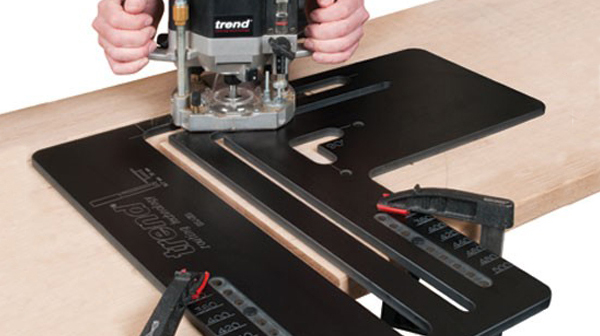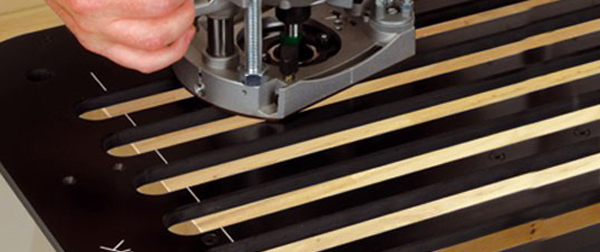Trend router jigs |
||||
 |
||||
What is a router jig? |
||||
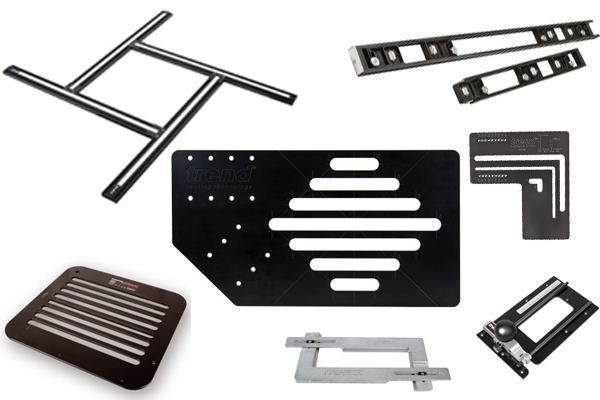 |
A jig is usually the name given to a specialist template which holds the workpiece and guides a tool. They are used for accurately completing complex routing applications, but other tools also have jigs they can be used with. They are commonly used by professional woodworkers and tradesmen who have to make accurate and repetitive cuts regularly. Jigs can save you a lot of time and ensure great accuracy every time, reducing the chance of making mistakes and wasting material. |
|||
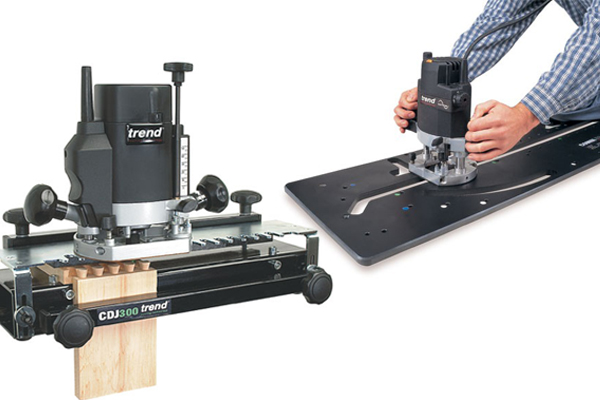 |
Some jigs for routers require complex marking out of the workpiece, set up of the template, and often the purchase of specific cutters and guide bushes, and may be difficult for beginners to use. You should always follow the manufacturer's instructions and recommendations for the type and size of cutter, the size of guide bush, and the types and thicknesses of material which can be used with specific jigs. Most jigs can only be used with routers that have a plunge feature. |
|||
What are the different types of router jig? |
||||
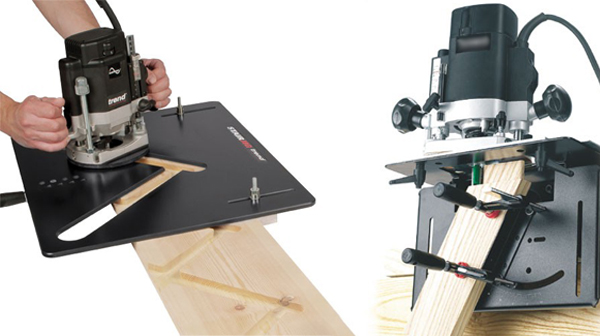 |
There are a huge number of different jigs. Each one is usually designed for completing very specific applications. Some are flat templates, like stencils, while others are more complex, 3-D-design, templates. Below is a brief description of some of the jigs you'll find available to purchase, others may also be available. |
|||
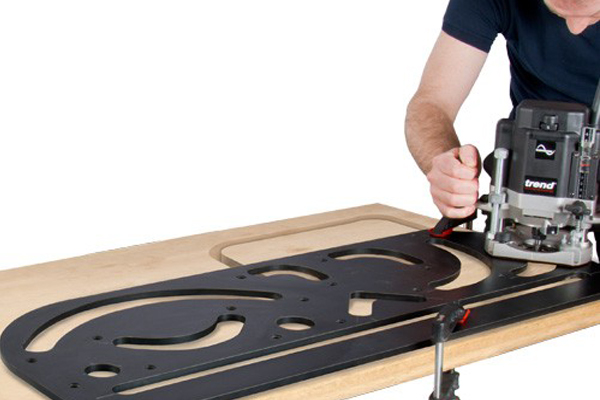 |
Aperture and Radius JigsThese jigs are used to assist with routing worktops to fit around curved edges and cabinets, and to fit a wide range of sinks and hobs by guiding the router for cutting recesses, apertures, and radii. They work as guides for internal and external radii, as well as having straight and 90-degree angle template slots. |
|||
|
|
Belfast Sink Jigs and draining groove jigsA Belfast sink can also be referred to as a butler sink, or a farmhouse sink. They are usually large, single bowl, rectangular ceramic sinks, although variations on this design are also available. A Belfast sink jig can be used to help with the fitting of these sinks by providing a template for straight lines and corners, as well as allowing a drip channel groove to be routed underneath the worktop. |
|||
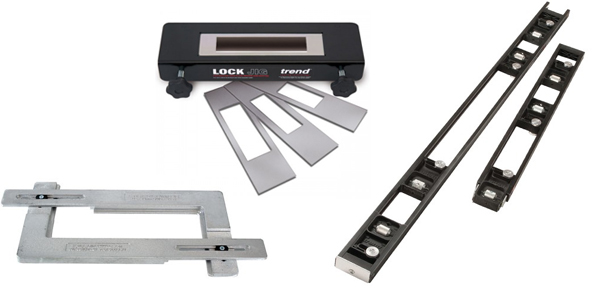 |
Jigs for fitting doorsRouters can be incredibly useful when fitting doors and their accessories, or hardware. There are various different types and styles of jig available to assist with the different tasks involved in fitting doors. |
|||
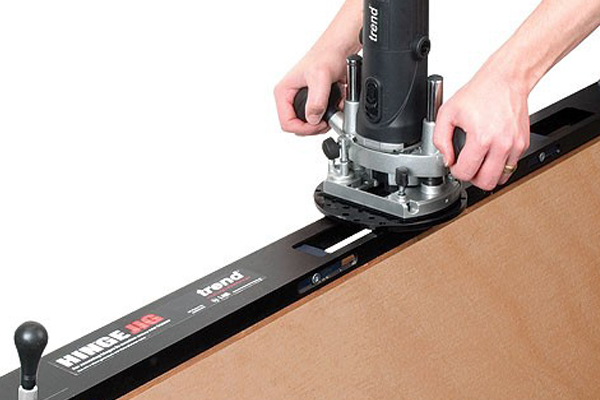 |
Hinge jigsThere are a few different types of door hinge jig, usually with two or more templates for standard sized hinges which are typically used on doors. Some can also be used to recess matching mortises into the frame for replacing an entire door set. They are often used alongside door clamps, door holder stands, or door lifters, to make fitting doors much quicker and easier. |
|||
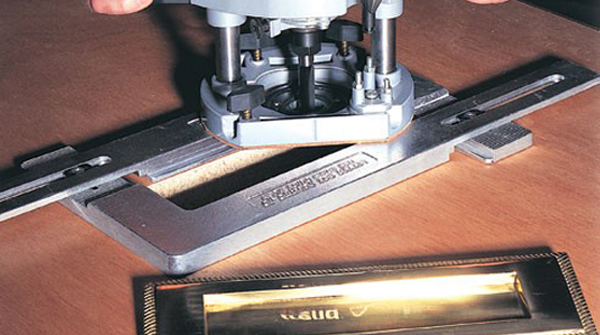 |
Letterbox jigsSome letterbox jigs are set to a few standard sizes, others are adjustable and can be set to the required sizes. They assist with cutting out the openings in which letterboxes need to be fitted into. |
|||
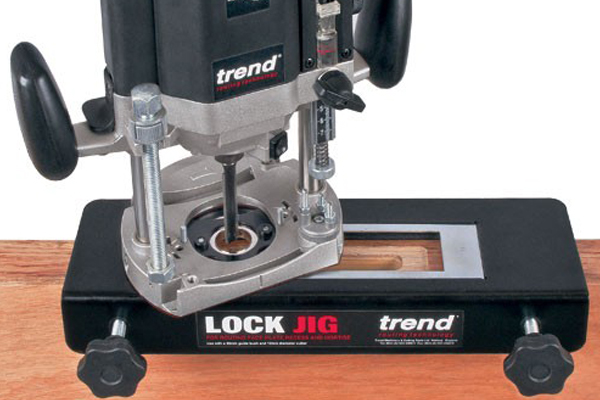 |
Lock jigsVarious lock jigs are also available to guide a router with cutting out recesses for locks and strike plates to be fitted. Adjustable lock jigs are ideal when working with locks in non-standard sizes. Other lock jigs have standard sized interchangeable templates. These are ideal when needed for use with large numbers of doors using different standard sized locks. |
|||
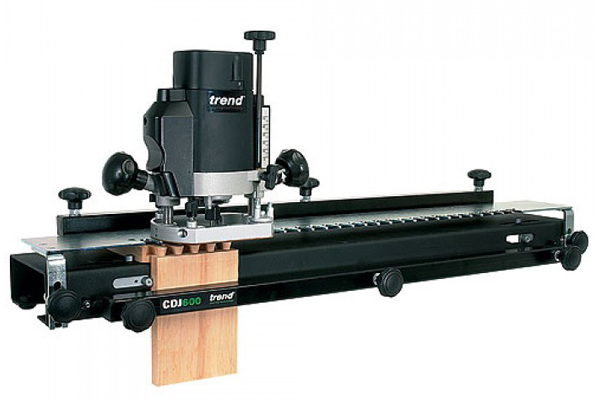 |
Dovetail JigsThese jigs assist with cutting out dovetail joints. They are available in different lengths, usually either 300mm or 600mm wide, and they often include a suitable guide bush and dovetail cutter. Many of these jigs can be converted with additional accessories to assist with cutting out of other joints as well, such as comb joints, half blind dovetail joints, and receiver holes for dowels. |
|||
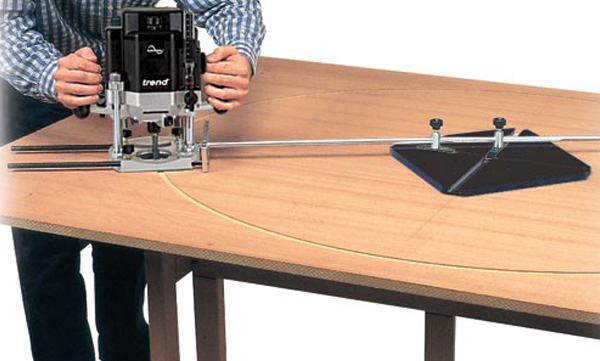 |
Ellipse Jigs
|
|||
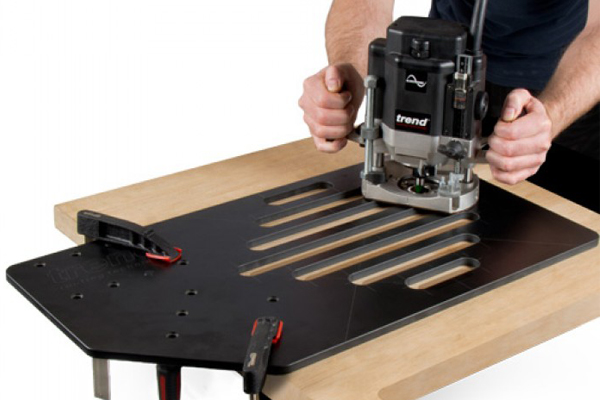 |
Hot Rod JigsWorktop hot rods, or protectors, are stainless steel rods which can be inserted into grooves on a worktop to act as a heat protector. Hot pots and pans will be supported on the rods which will lift them slightly above the work surface. Hot rod jigs guide your router for cutting out the grooves needed to fit standard sizes of hot rods. |
|||
 |
Stainless steel hot rodsFor use with the , Trend now produce four different sizes of brushed stainless steel hot rods with a 12mm diameter for use in timber worktops to protect surfaces from the things like hot pots and pans. They are available to buy in singles in lengths of , , , and . |
|||
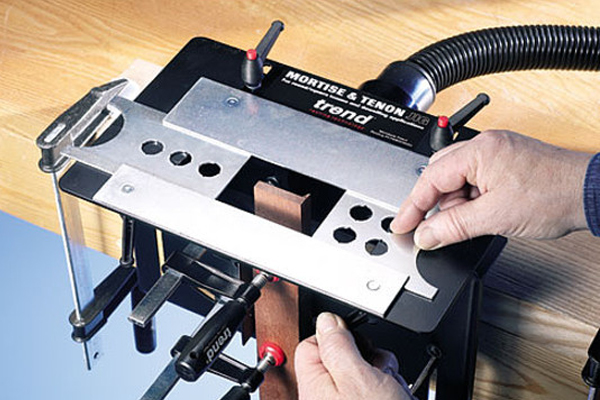 |
Mortise and Tenon JigsThis jig can be used to help rout perfectly fitting mortise and tenon joints, as well as dowel joints. They can produce round and square end tenons, as well as angled mortises and tenons. They can be set to different sizes and come in a metric or imperial version. |
|||
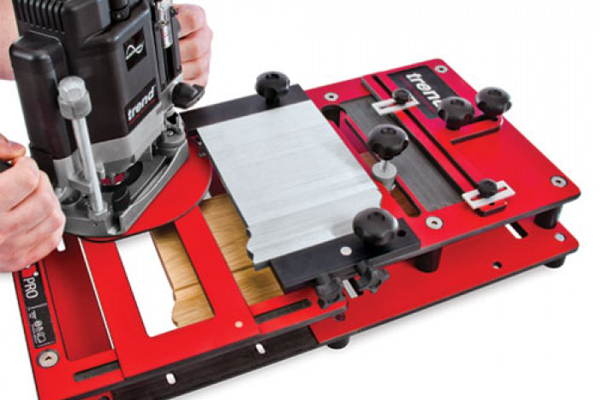 |
Scribe-Master ProThis specialist jig is an excellent way to scribe moldings, used for skirting, architrave, or dado rails, using a router. They have moveable plates which are sandwiched close together, but can be moved to the exact cast of almost any shape of moulding. This cast then becomes the template for the router as it scribes the shape of the moulding. This is usually considered to be a jig for professionals to use as it's difficult to set correctly, but it offers exceptional performance. |
|||
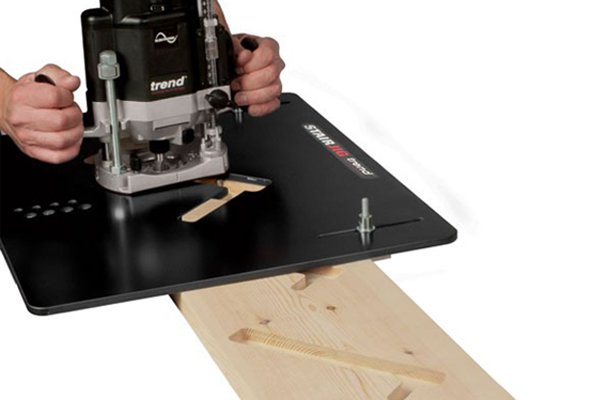 |
Stair JigsStair jigs are typically used by workmen who build and install staircases. They are a template for accurately and quickly routing out stair housings with adjustable stair angle pitch for private and common stairs. They're available in versions for closed or open riser stairs. |
|||
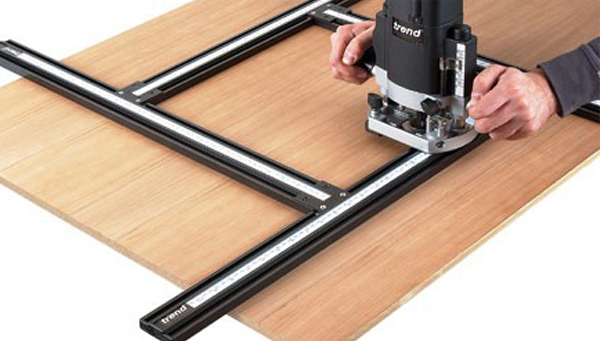 |
VarijigsA varijig is an adjustable frame jig for routing square and rectangle frames of varying sizes. Allows for the router to cut things such as recesses and slots. This jig can also be used for creating panel doors. |
|||
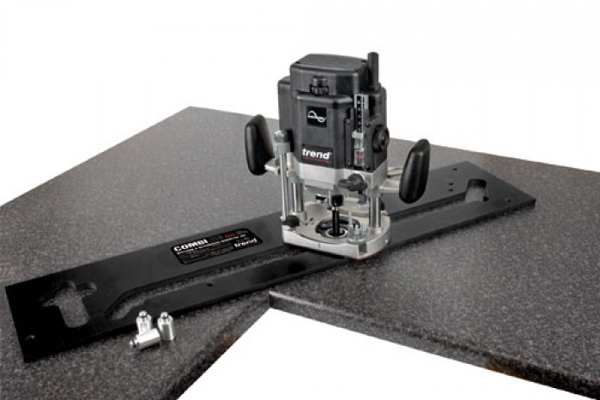 |
Worktop JigsA worktop jig is sometimes referred to as a kitchen worktop jig, are used for routing out the edges and recesses required for making and fitting worktops, usually kitchen worktops. Different types and sizes are available, depending on the types of worktop you regularly work with. |
|||
 |
Other router templatesSome other, usually less complex, types of template and guide accessories are also available for routers, they include: |
|||
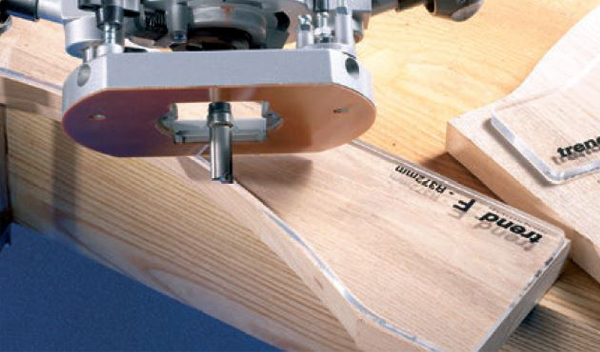 |
Panel door templatesYou can create traditional rail and panel doors with a router and a . These templates are clear plastic that 6mm thick. These are two-part templates for both the concave and convex cut, for the frame and panel. some models of router will need the Unibase to work with this template. |
|||
 |
Cabinet door hinge templateis for routing 26mm and 35mm diameter blind holes for circular hinge holes for hinges used on cabinet doors. For use with a plunge router with a 12.7mm (1/2”) diameter router cutter and 30mm guide bush. It has and adjustable and removable alloy end stop for altering the recess position from the top and the bottom of the door (normal position is 100mm). It has 3mm and 5mm offset location holes to precisely position the recesses relative to the edge of the door and the pin holes are reversible for right-hand or left-hand doors. |
|||
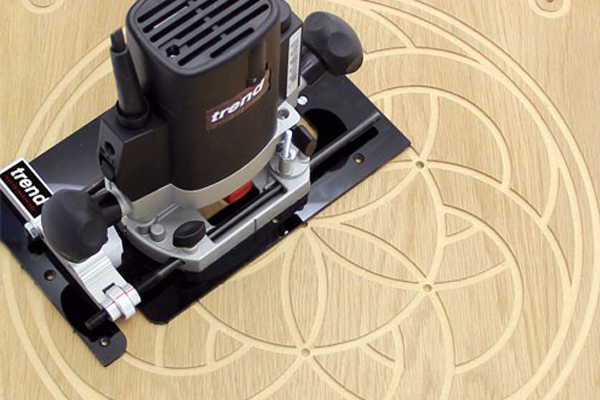 |
Combination router basesThe combination router base is a multi-functional base which increases the versatility of a router. It has seven basic functions, including, a router compass, an offset base plate, an anti-tilt support, and can enhance the routers performance with the varijig. It should increase your accuracy, improve the quality of finish, and reduce the possibility of error. |
|||
 |
Offset router basesThe two basic offset router bases available are the offset trench base, which allows for wider grooves to be routed by just rotating the hexagon shaped base, and the teardrop shaped offset base, which allows for better control when edge mounting the router. |
|||
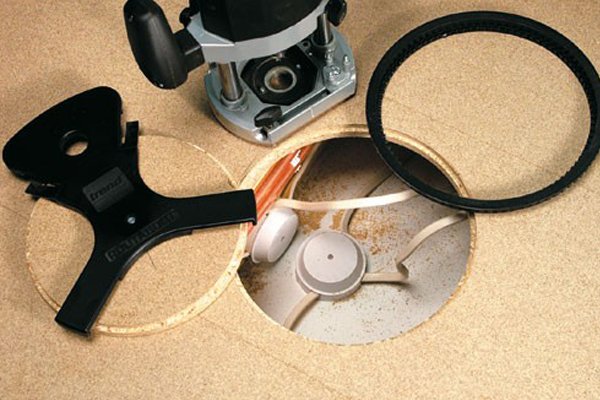 |
Routabouts
|
|||
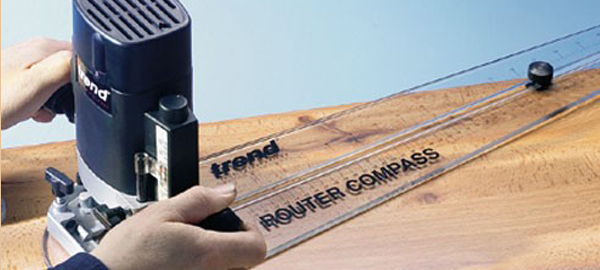 |
Router compassesA basic router compass is usually able to guide the router for cutting circles or arcs between 100mm and 610mm radius by fitting to the base of a router. |
|||
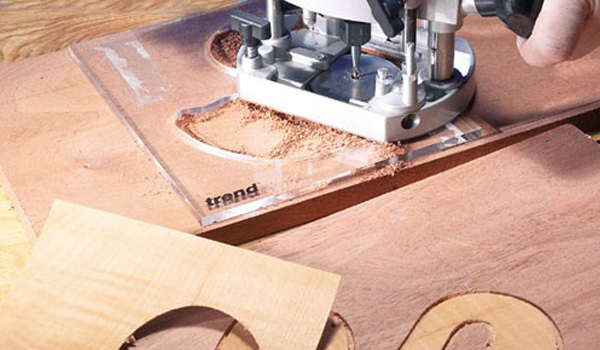 |
Router stencil templatesThere are a huge number of more simple, and yet still often quite specific, templates are available for various tasks. These include templates for lettering and numbers, frames and plaques, panel doors, cable tidies, corners, various shapes of inlay design, and for repairing flush panels. |
|||
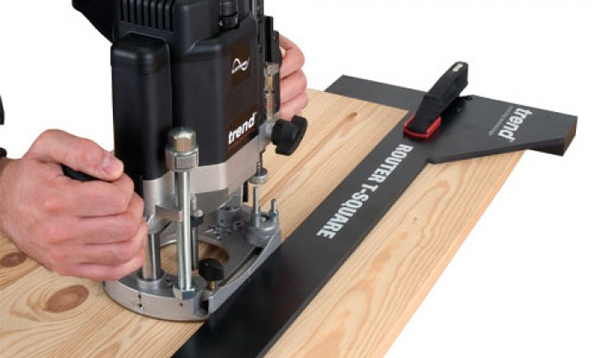 |
Router T-squaresA router t-square is usually about 1000mm long with two straight edges which can be used to guide a router. It has a butt set at a perfect right angle for accurately cutting square edges. It's usually used to guide the router while cutting grooves and trenches. |
|||
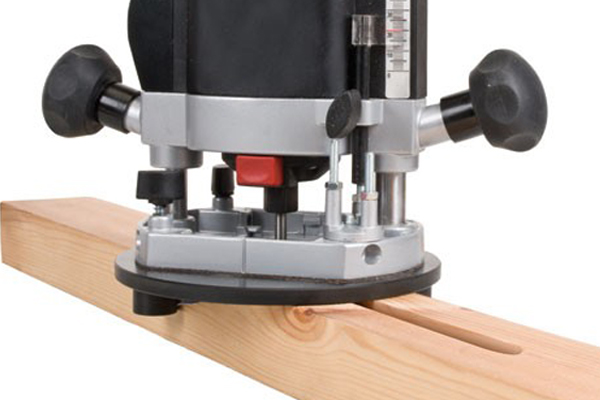 |
Self centre mortise baseA router base used to guide a router along the centre of a piece of timber, to rout out mortises, without the need to measure and mark the mortise width. The self centre mortise jig has roller guides at the bottom to run along both edge of the timber with the cutter accurately centred. |
|||
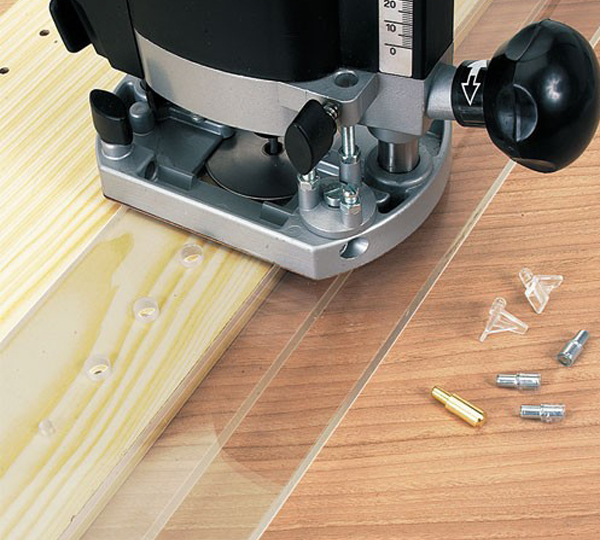 |
Shelf support templateThis template is used for creating the holes for shelf supports, typically found in cupboards and cabinets, which allow a shelve's height to be adjusted. It is set up for the European standard for shelving systems. The holes are set at 32mm apart and will run parallel to the edge of the material. It can be set to position the holes from 10mm to 64mm from the edge of the board. It should be used with a 9.5mm guide bush, which is usually supplied with the template, and a 5mm TCT router dowel drill. It can also be used with a power drill with the appropriate accessories. |
|||
 |
||||






